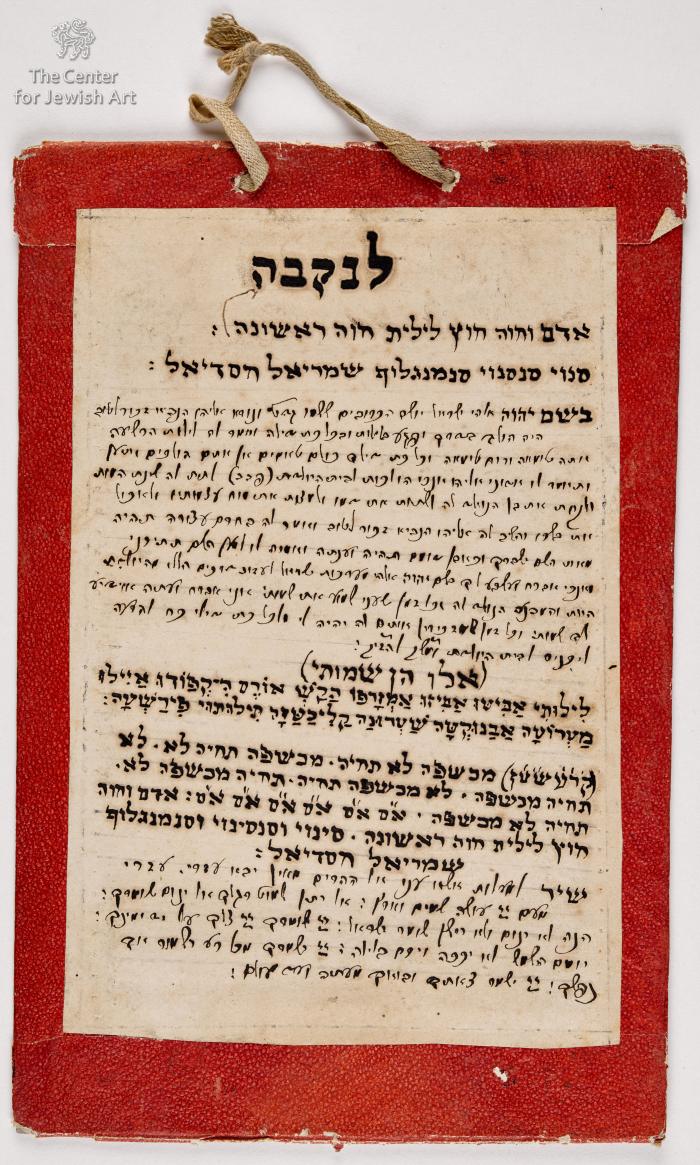Obj. ID: 51211 Le-Zachar Le-Nekevah, Bayern (Bavaria), circa 1850

sub-set tree:
The following description was prepared by William Gross:
From earliest times, man has tried to protect himself from misfortune by the use of objects which he considered holy or otherwise (e.g., magically) potent. Amulets and talismans are items generally worn around the neck or wrist, carried in a pocket or purse or hung on a wall. They are meant to protect or aid those who carried or wore them. The Hebrew word for amulet, kame‘a, has the root meaning "to bind". Jewish amulets are usually comprised of texts (either letters or graphic symbols) that are inscribed on some sort of material; some may also contain plant matter or precious stones. The texts of amulets usually include holy names that are believed to have the ability to affect reality, along with incantations summoning angels or other magical powers. For the most part, an amulet has a specific purpose: to ease childbirth, facilitate recovery from illness, improve one’s livelihood, and so on, but in the modern world many are also made for general protection.
The popularity of printed birth amulets in the area of southern Germany was great. Many different varieties were printed in the 18th and 19th centuries in several cities, including Fuerth. This example is done by hand, but copies almost word for word the text of most of the printed amulets. The amulets for male and female child are written on the two sides. The amulet was hung with the appropriate text showing.
Such amulets often invoke the patriarchs and their wives, as in this example, and the citing of the names of the angels Sanoi, Sansanoi and Samgalaf are specifically for protection against Lilith. There are other specific inscriptions against Lilith as well as the "Shir le-Ma'alot."
For a second example of this amulet type see 027.011.614.



